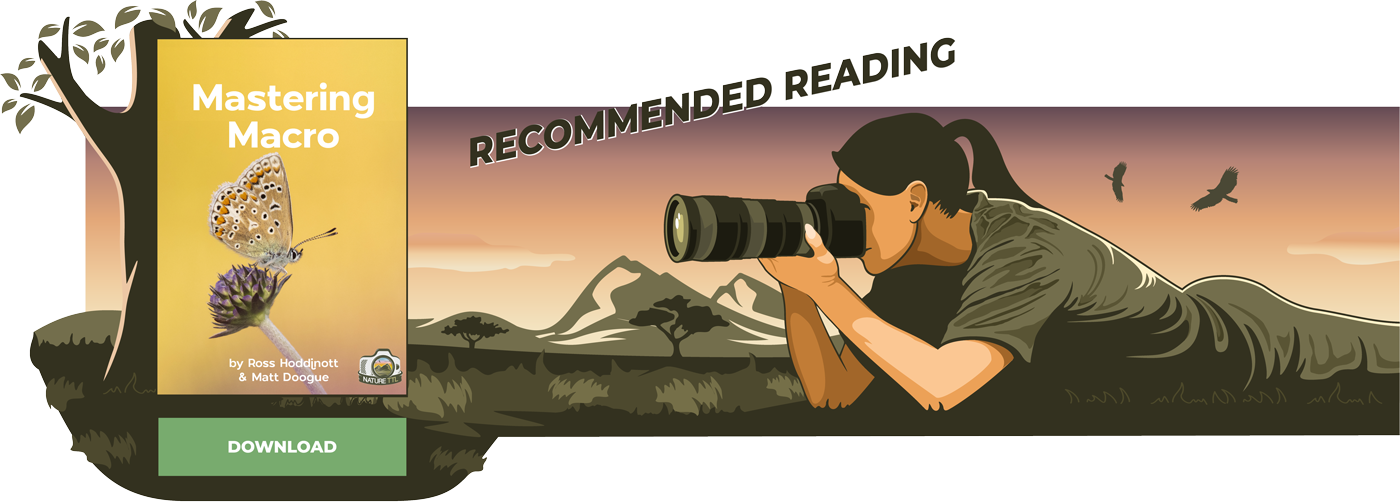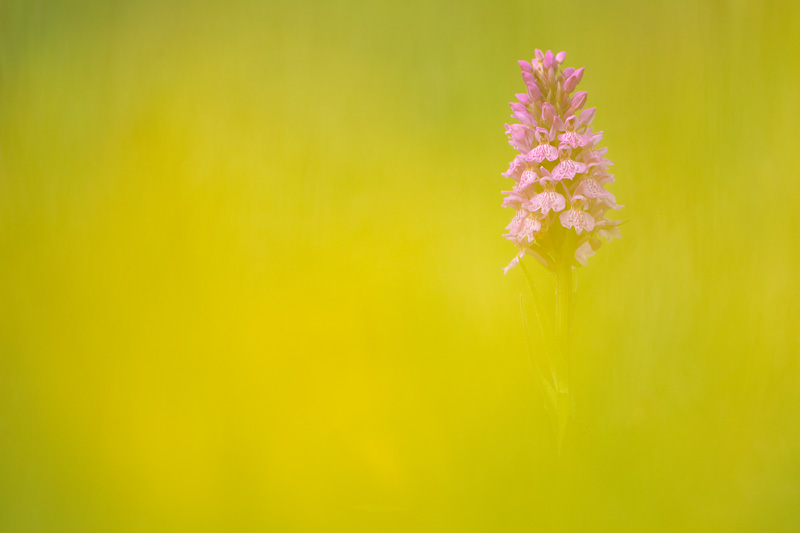How to Photograph Wildflowers

As summer progresses so does the proliferation of wildflowers in gardens, meadows and woodlands, providing a smorgasbord of colourful blooms to photograph. Such is the variety of size, structure and colour that there are numerous possibilities for creating striking images. Throw into the mix the variation of light, depth of field control and choice of focal length and the potential becomes exponential.
However, it’s probably fair to say there isn’t a definitive way of how to photograph wildflowers and it has more to do with the style of image that you are trying to capture. This may be inspired by other photographers’ images or from being out in the field surrounded by a spectacular display of wildflowers. On a personal level, I’m inspired by pictorial images with a creative edge. Intriguing composition, clever use of colour combinations, great bokeh, or the creative use of light. Often it’s a combination of these factors that gives an image a unique pictorial quality and this is what I try to bring to my own flower images whenever possible.



Now don’t let me lead you to think that I have mastered this genre. There are far greater exponents of the art of flower photography than myself, but I do know what I like in both others’ work and my own and this is a good starting point. What I enjoy about flower photography is the ability to experiment with different ideas. This is a luxury that is not often afforded to me when I’m photographing wildlife. But with flowers the approach can be more considered, with time to think about composition, lighting and lens choice. By slowing down, I find that I am able to create a wide variety of images from a single subject over an extended period of time. This rarely happens with wildlife or landscape photography and comes as a welcome change.

The driving force behind most of my flower images is colour, shape and light and to this end it’s the petals and other parts of the flower itself that interest me the most. That’s not to say that other parts of the flower, or indeed non-flowering plants, don’t have their merits but this is usually where my inspiration comes from. Because of this, and the small nature of most flowers, I often opt to use one of my macro lenses. This may be a Tamron 90mm f/2.8 or a Sigma 180mm f/3.5, both of which are super-sharp lenses. The Tamron is more portable and is a lens that I’ll often have with me for opportunistic flower images, but if I’m going out specifically to photograph flowers I’ll pack the Sigma 180mm along with my other telephoto lenses. What I like about the 180mm macro lens is that I can photograph from a greater distance and also create more interesting out of focus areas.

When working close-up, depth of field is inherently minimal, but this can be used to great effect to create a soft ethereal effect to flower images where only a small part of the subject, such as the tip of a stamen or a dew drop on a petal, is in focus. So rather than stop down the aperture to f/16, I usually shoot at much wider apertures of around f/2.8 to f/5.6. Shooting at maximum aperture reduces depth of field to its minimum, creating the greatest bokeh. Sometimes a little more depth of field suits the subject better, in which case I’ll stop down to f/5.6 and occasionally f/8, but at the same time I’m conscious of the effect that this is having on the background and other areas of the picture. This may not always be obvious when I’m taking the picture so one way to hedge my bets is to take the same shot at different aperture settings and then compare these later on the computer monitor to see which works best.

One of the difficulties I find when shooting close-up macro shots is achieving critical focus on a precise part of the flower. And whilst the overall effect that I’m trying to achieve is a ‘soft’ looking pictorial image, the point of focus is still critical. To overcome this I always use Manual focusing as it gives much greater control over the precise point of focus. As an additional aid, I often use LiveView and make use of the magnify tool to zoom in at the 5x or 10x level to examine the part of the flower I want to be pin sharp, and then make any necessary adjustments to the focus. Obviously the flower has to be completely still to be able to do this, as even the slightest movement will cause the flower to sway in and out of focus. Calm, windless periods of the day are therefore preferred or, failing that, some means of stabilising the flower using a clamp, for example, to keep everything steady. Similarly, I consider a tripod to be essential.
It can be fiddly to position a camera on a tripod to achieve the desired composition, but it’s worth persevering to get it right. Working from a tripod also provides an opportunity to study the composition in more detail and look not only at the main focal point of the picture, but also the surroundings and the edges of the frame. Again, I find Live View very useful for this as it allows me to take a step back and view the image on the back of the camera to provide a better impression of the overall effect and makes distractions more obvious. Simplicity is often key to the success with these images, and distractions or competing elements can spoil the effect, so careful evaluation of the shot using Live View can be very helpful.
One alternative to shooting flowers with a macro lens is to use a telephoto lens. A lens in the range of 300mm upwards is great for this and, if necessary, I use extension tubes to facilitate closer focusing. A telephoto is the perfect way to isolate a single flower from its surroundings or to highlight a specific flower within a mass of other blooms. This isolating effect is best achieved by using a wide aperture so that just the single flower is captured in sharp focus and the surroundings are blurred out. Using a telephoto for this type of shot really adds to the effect by exaggerating the out of focus areas. This softening effect can also be put to great use by shooting through other flowers to create washes of out of focus colour. This looks great when flowers are very close to the front of the lens, as this veil of colour becomes semi transparent, through which other flowers are visible.

The colourful diversity of flowering plants makes them perfect subjects for these kinds of creative techniques, and there are so many variations to these ideas to produce really stunning images. Not only is it a relaxing way to while away a few hours of enjoyable photography, but the results are both intriguing and beautiful in equal measure.






